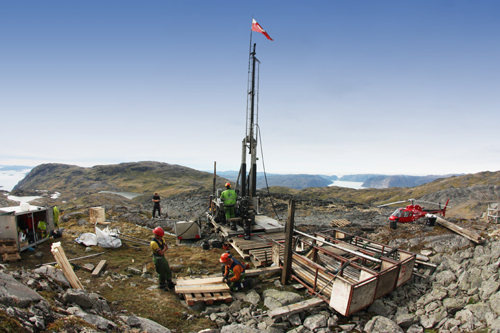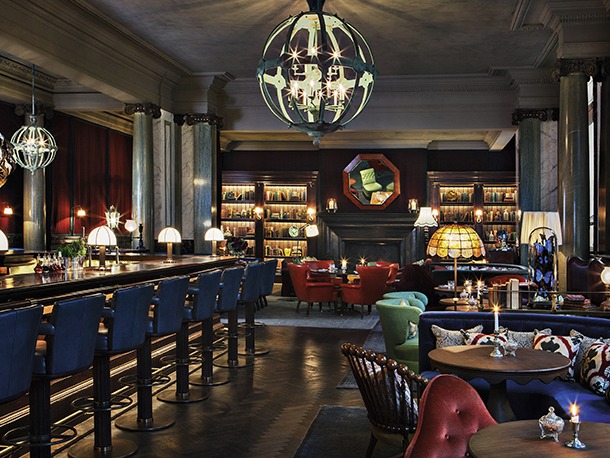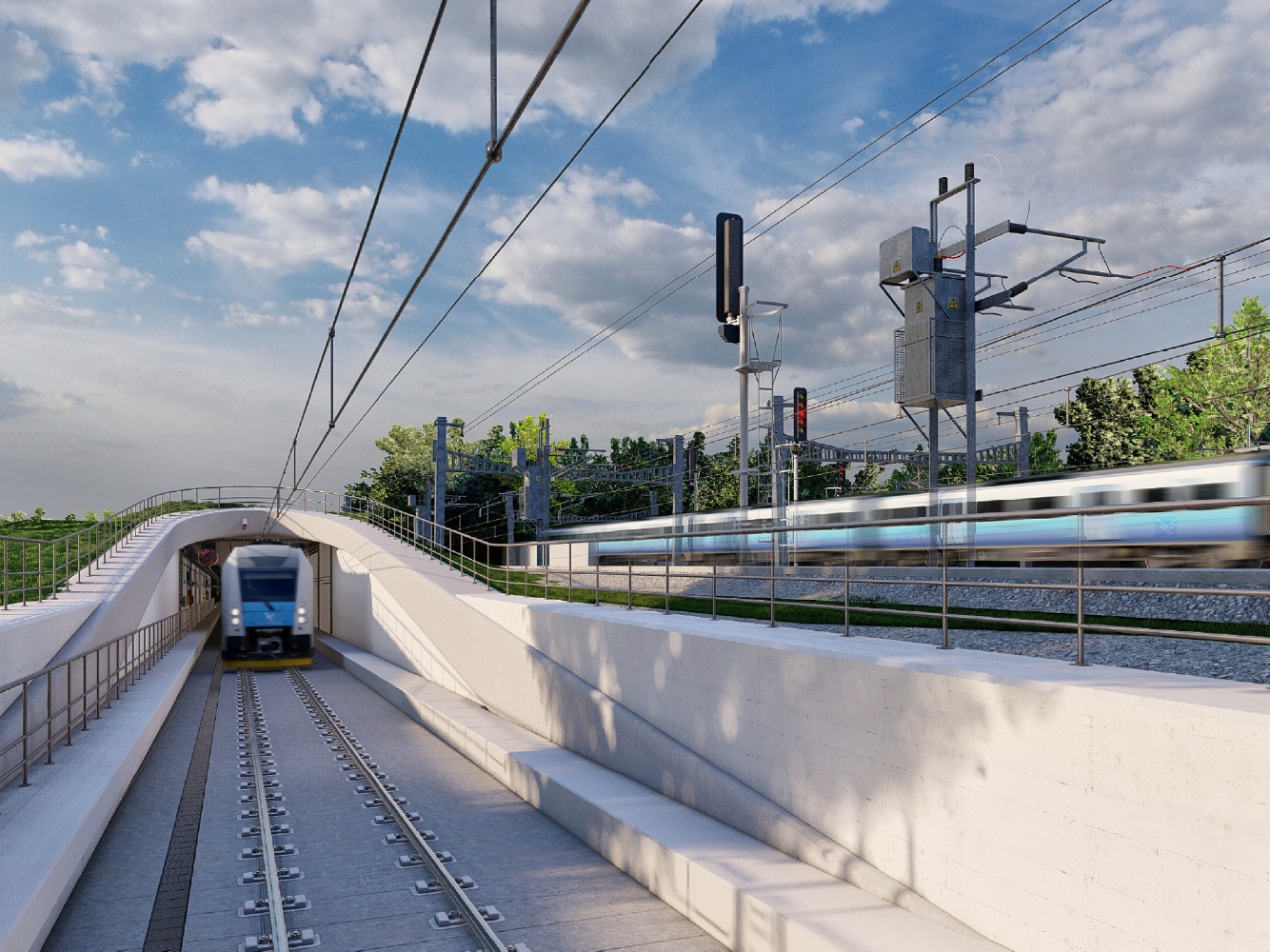
In 2006 when he seriously started to sell his conviction that Greenland would be the next game-changer in the global supply chain for minerals, Rod McIllree found that the investment community in his native Australia shared neither his enthusiasm nor his outlook. In Australia not many people had heard of the Ilimaussaq Complex right at the southern tip of Greenland, which had been investigated by geologists from Greenland’s ‘mother country’ Denmark for decades and had been found to be rich in uranium. So he turned his attention to North America and Europe where he found an audience much more interested in understanding Greenland’s potential. “It was much simpler to sell the story there,” he says. “Greenland’s continuously stated position is that it sees its future intimately entwined with the development of a successful mining industry.”
In early 2007 GME acquired a majority interest in an exploration licence covering the northern Ilimaussaq Complex, and has subsequently increased that to 100 percent. The Kvanefjeld project is among the world’s most strategically important mineral projects because of the large amount of rare earth elements (REEs) that it contains. These are a group of about 17 minerals that have come into increasing demand for applications such as high powered magnets, lasers, mobile telecommunications and other electronic applications, optics, ceramics and the like. They are not in fact uncommon in the earth’s crust, but there are not too many places where they occur in commercially exploitable quantities. “Kvanefjeld is the largest global example of a uranium and rare earth deposit,” emphasises McIllree.
China currently dominates the market for rare earths, accounting for more than 90 percent of global supply and at least 60 percent of consumption, however a considerable proportion of China’s production came from illegal sources sourced on the black market. Now China is tackling the environmental issues associated with this black market and as a consequence there is less supply available at a time when demand is rising with the result being reflected in rising prices for the critical rare earths. It has cut back exports of all REEs from the 35,000 tonnes it supplied in 2010, and banned exports of the heavier rare earths terbium and dysprosium.
Understandably a number of projects are being advanced urgently to fill the gap. Kvanefjeld undoubtedly has the scale to supply 20 to 30 percent of the urgent and growing need from European and North American markets and GME is well placed to become one of the world’s largest and most cost-effective producers of these speciality metals. It has many other advantages over rival projects. The sheltered fjord the deposit sits on is open to shipping all year long and is close to transatlantic shipping lanes. Distances from project to port is less than ten kilometres and the town of Narsaq is not much further. Narsarsuaq international airport is 40 kilometres away and low cost power can be supplied from hydroelectric generation.
And if this did not trump the projects under consideration elsewhere in the western hemisphere, this is a non-refractory deposit. Refractory ores examples of which might be allanite or monazite eudylaite or other zirconium based minerals have to be broken down using what Rod McIllree calls a ‘hot chemical sledgehammer’. Kvanefjeld on the other hand can be processed in open air leach tanks with dilute acids. This vast resource is also amenable to simple beneficiation (pre treatment concentration) through a simple floatation step where the company is getting industry leading upgrades of more than 10 times allowing for huge cost savings downstream.
Until very recently just one thing stood in the way of GME. This was the Danish (and Greenlandic) government’s blanket ban on the exploitation of radioactive minerals. While rare earths are not radioactive the resource is mixed up with commercially significant quantities of uranium. When in the 1970s the Danish government backed examination of this site, it was uranium that it was interested in, but that interest was extinguished when Denmark decided to terminate its programme for nuclear power generation.
The problem for GME has been that it couldn’t separate the rare earths without separating the uranium, and that was forbidden. But in October this year Greenland’s parliament voted to remove its long standing zero tolerance policy. This was not exactly a bolt from the blue, as it had been anticipated since November 2011 when Greenland’s Bureau of Minerals and Petroleum amended GME’s exploration licence over Kvanefjeld to include uranium giving it the right to apply to exploit uranium along with other economic minerals.
As far as Kvanefjeld goes, uranium is a by-product, with around 15 percent of the revenue attributable to it. Uranium has a ready market to sell any product into but McIllree points to the ability to tie in with a major to potentially supply upwards of three million pounds for more than 50 years, it’s an attractive alternative to unstable production. “This policy change is a transformational event for the company as it now allows us to move forward with the mining licence application and continue to progress end user engagement,” says McIllree. A bigger transformation, he continues, lies in the statement it puts out to the world at large. “Greenland, and its government, is now our biggest advocate; it is very vocal about its desire to get a mining industry up and going, and this is going to be one of the main foundations of the country’s move toward eventual independence. This is not a niche event – it is something that is being discussed at all levels of government from the Danish government down to the local population at Narsaq, where there’s a consensus that everyone wants this to happen.”
Lifting the ban on exploiting materials like uranium and thorium was a transformative event for the company, but it is the beginning not the end of the process. A regulatory and safety structure needs to be established by the Greenland government covering the extraction, processing, handling and transportation of these materials. In this it will no doubt benchmark on Canadian best practices which have been in place for a long time, and are particularly relevant considering the geology of north eastern Canada is identical to Greenland – they were a single land mass not that long ago in geological time.
However the decision is a signal that GME can now move Kvanefjeld on with confidence and one that will be noted by current and potential investors. “At the moment we are working with the regulatory bodies in Greenland and Denmark to identify the most appropriate implementation model for all stakeholders,” says Rod McIllree. “Three main modules are required to produce the REEs and uranium: the first is the mineral concentration process which occurs immediately adjacent to the ore body. A second, an intermediate refining step will probably also be done in Greenland though we are still considering the economic implications of that.”
The final stages of stockpiling and shipping the concentrates will require investment in roads and port facilities, and finance will have to be raised for this. However the path is now clear to lodge a mining licence application in 2014. By then GME will have firmed up its implementation strategy, with partners the government can accept and thereby assure total downstream security of the product: uranium is a new industry for Greenland, still sensitive, and one it wants to get right.
Depending on how long it takes for the licence to be issued (and given the importance of Kvanefjeld to the nation that should not take long) he hopes to start construction early in 2015 to a schedule that will allow production to start at the beginning of 2017. “We would see one or two ultimate end users for the REEs and a single recognised western uranium utility refiner as an offtake partner for the uranium.”
Kvanefjeld is the one project that will put Greenland on the map processing between three and four million tonnes of rock a year to produce 400,000 tonnes of mineral concentrate. It will, says Rod McIllree, generate more than 20 percent of Greenland’s GDP, boosting employment and downstream industries on top of the direct funds it will contribute in tax and royalties and will finally get Greenland off Denmark’s books. “The economic significance of this project cannot be overstated. When we look back years from now it is this policy event that will be seen as the spark that brought to life Greenland’s long awaited minerals industry” says McIllree, clearly conscious that Kvanefjeld is at the same time, both a company maker for GME and a foundation stone for the nation of Greenland.
Written by John O’Hanlon, research by Richard Halfhide
DOWNLOAD
 GMLE-Europe-Mining-Jan14-Bro-s.pdf
GMLE-Europe-Mining-Jan14-Bro-s.pdf













